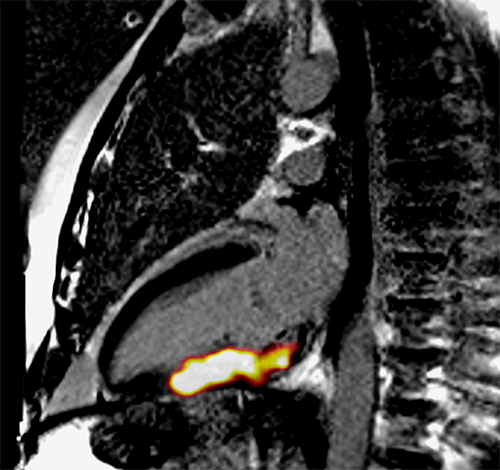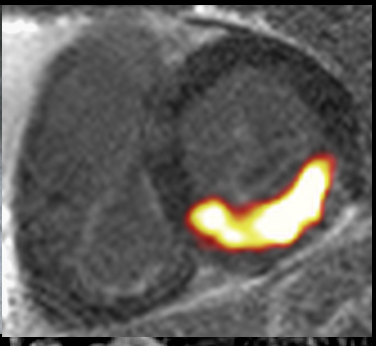27 Apr 21. Edinburgh Imaging FAPI accomplishment
Edinburgh Imaging & NHS radio-pharmacy collaborated successfully, to produce the first ever Gallium radiotracer cardiac images, in patients who recently suffered heart attacks.

Fibroblast activation protein inhibitor (FAPI) radiotracers bind to areas of active scarring throughout the body.
Research into their possible role so far has focused on patients with cancer & they haven’t been prospectively investigated in cardiovascular disease outside a few case reports.
To the best of the team’s knowledge, their initial scans obtained in patients who had recently suffered heart attacks were the first 68Gallium (68Ga)-FAPI PET-MR performed in patients without cancer. They were also the Edinburgh Imaging facilities’ first ever Gallium radiotracer scans.
The team have secured ethical, ARSAC & R&D approval to scan a larger number of patients & healthy volunteers to learn more about the scarring process in the heart & blood vessels following a heart attack.
Setting up this project to allow the team to obtain these first images is a culmination of excellent collaborative team working between:
- Edinburgh Imaging Facility - physicists, business management, radiographers, radiologists, PET/Nuclear medicine scientists, data management
- NHS Radio pharmacy – Clint Waight (who has led the charge developing the tracer despite a lot of set-backs)
- CVS research team - Anna Barton, Professor Marc Dweck, Professor Scott Semple, Professor David Newby

Social media tags & titles
Edinburgh Imaging & NHS radio-pharmacy collaborated successfully, to produce the first ever Gallium radiotracer cardiac images, in patients who recently suffered heart attacks.
@MarcDweck @AnnaKateBarton @EdinUniCVS @EdRadiopharmacy

